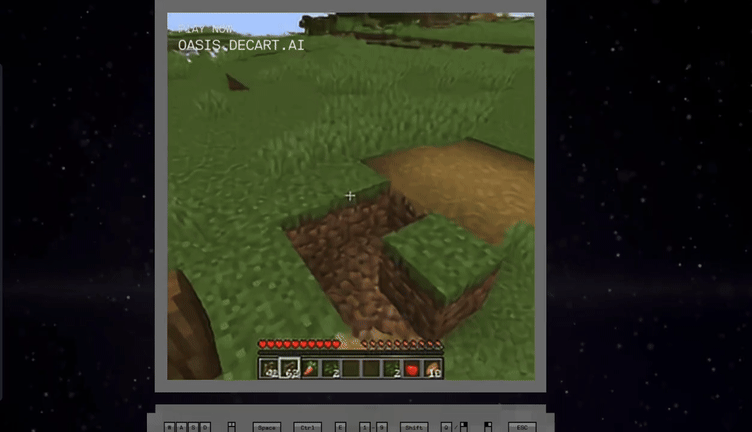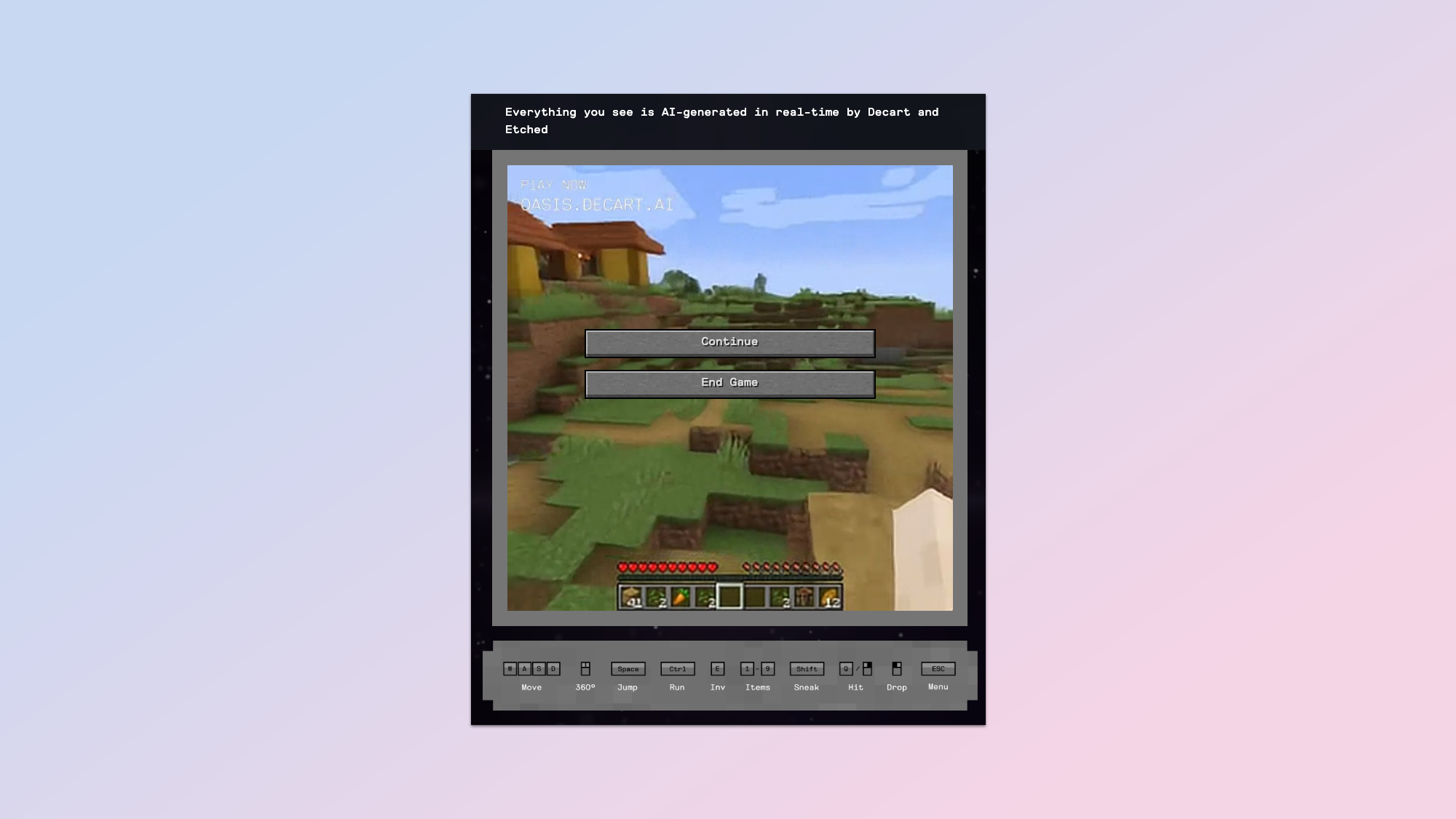
A new AI model called Oasis has made waves by generating a playable version of Minecraft-like gameplay using only images. Developed by Decart in collaboration with Etched, this innovation offers an exciting look at the future of video game creation and interactive experiences.
Oasis is referred to as "the world's first real-time AI world model." Unlike traditional game engines, Oasis creates gameplay based on user input and visual data. It processes keyboard and mouse inputs, generating each gameplay frame on the fly at about 20 frames per second.
The system simulates physics, game rules, and graphics internally, allowing for a dynamic gaming experience that adapts to how the player interacts with it.
Netflix is one company actively exploring the potential for generative AI in gameplay, including shutting its own game studio. The goal is to "accelerate development and create novel gaming experiences," which won't be popular among the employees laid off from the gaming studio.
How Oasis works

Oasis is built on a new AI architecture that combines Vision Transformer technology with a diffusion model for image processing. This setup enables it to create gameplay frames in real time based on user input.
The system operates at 20 frames per second with "zero latency" on a single NVIDIA H100 GPU, generating each frame in about 0.04 seconds. This is much faster than other AI video generators like OpenAI's Sora or Runway Gen-3, which usually take 10-20 seconds to produce one second of video.
While this is very impressive, it still has some limitations. The gameplay resembles a low-resolution and somewhat glitchy version of Minecraft, with issues around object permanence.
Moreover, the environment can change unexpectedly when the player turns, while the frame rate and visual quality fall short of traditional games. Despite these challenges, the technology shows great promise for the future.
Implications on the gaming industry
Introducing Oasis: the first playable AI-generated game.We partnered with @DecartAI to build a real-time, interactive world model that runs >10x faster on Sohu. We're open-sourcing the model architecture, weights, and research.Here's how it works (and a demo you can play!): pic.twitter.com/X39vkx3WIDOctober 31, 2024
The rise of AI-generated gaming experiences like Oasis could significantly impact the industry. Game developers might quickly create and test new gameplay ideas, while models could adjust game worlds and stories in real time based on what players prefer. Additionally, automating parts of game creation could help reduce production costs.
While challenges remain, this technology offers a glimpse into a future where artificial intelligence will play a key role in crafting personalized gaming experiences.
However, the use of AI to create games based on existing titles raises important questions about copyright and creative ownership. It's not clear yet if using gameplay footage for training AI models violates game developers' intellectual property rights. As artificial intelligence plays a bigger role in game development, issues regarding authorship and creative control will need to be addressed.
Although it's still in its early stages, Oasis marks a notable advancement in AI-driven game development. As the technology evolves, we can expect higher resolutions, better frame rates, and more complex game worlds with improved object permanence. There’s also potential for AI generation to be integrated into traditional game development processes.
This is an exciting milestone at the crossroads of artificial intelligence and gaming. While challenges remain, this technology offers a glimpse into a future where artificial intelligence will play a key role in crafting personalized gaming experiences.







